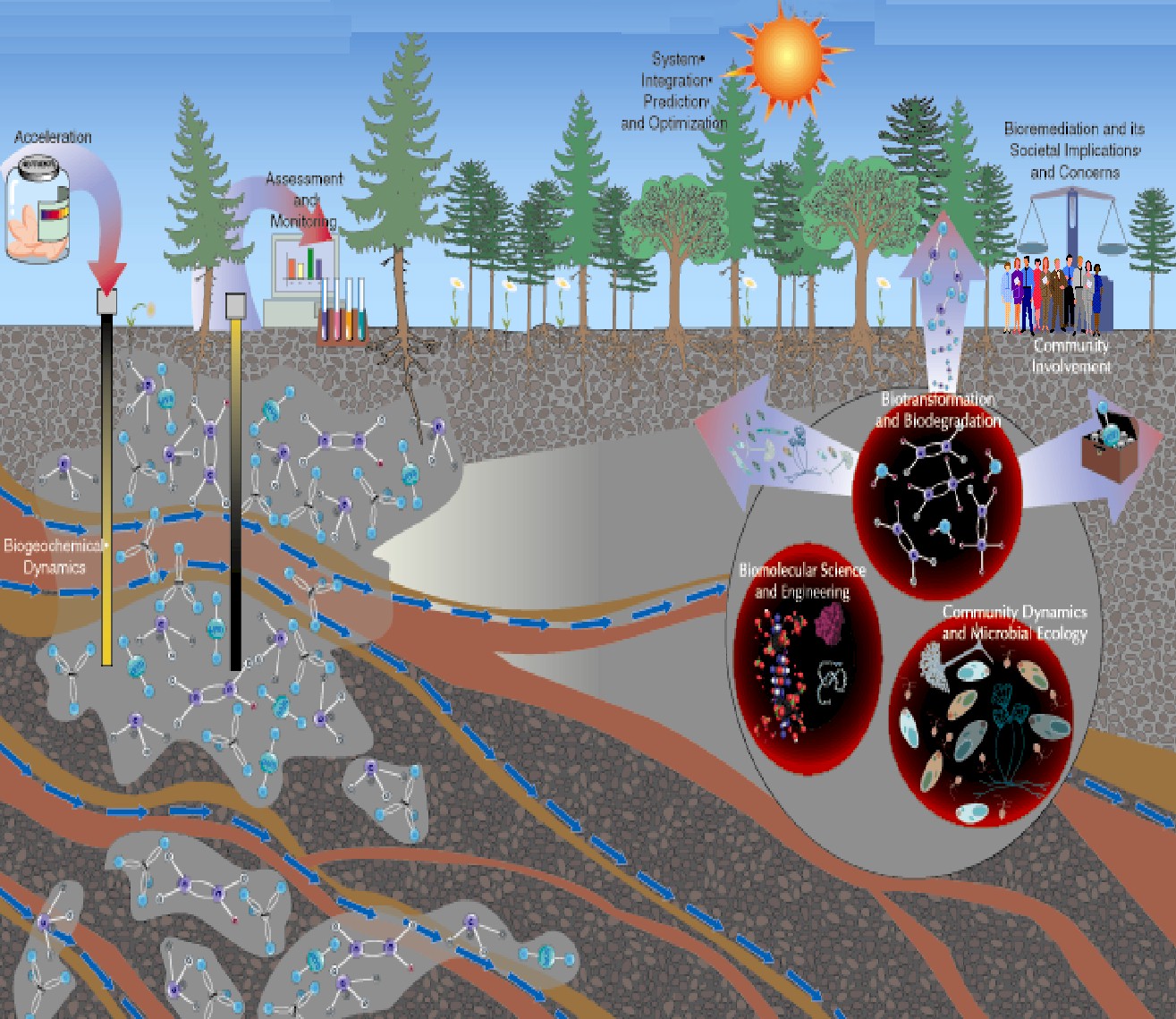
Naturally occurring bioremediation and phytoremediation have been used for centuries. For example, desalination of agricultural land by phytoextraction has a long tradition. Bioremediation technology using microorganisms was reportedly invented by George M. Robinson. He was the assistant county petroleum engineer for Santa Maria, California. Bioremediation technologies can be generally classified as in situ or ex situ. In situ bioremediation involves treating the contaminated material at the site while ex situ involves the removal of the contaminated material to be treated elsewhere. Some examples of bioremediation technologies are bioventing, landfarming, bioreactor, composting, bioaugmentation, rhizofiltration, and biostimulation. Not all contaminants, however, are easily treated by bioremediation using microorganisms.
Mycoremediation Mycoremediation is a form of bioremediation, the process of using fungi to return an environment (usually soil) contaminated by pollutants to a less contaminated state. The term mycoremediation was coined by Paul Stamets and refers specifically to the use of fungal mycelia in bioremediation. One of the primary roles of fungi in the ecosystem is decomposition, which is performed by the mycelium. The mycelium secretes extracellular enzymes and acids that break down lignin and cellulose, the two main building blocks of plant fiber. | These are organic compounds composed of long chains of carbon and hydrogen, structurally similar to many organic pollutants. The key to mycoremediation is determining the right fungal species to target a specific pollutant. |
